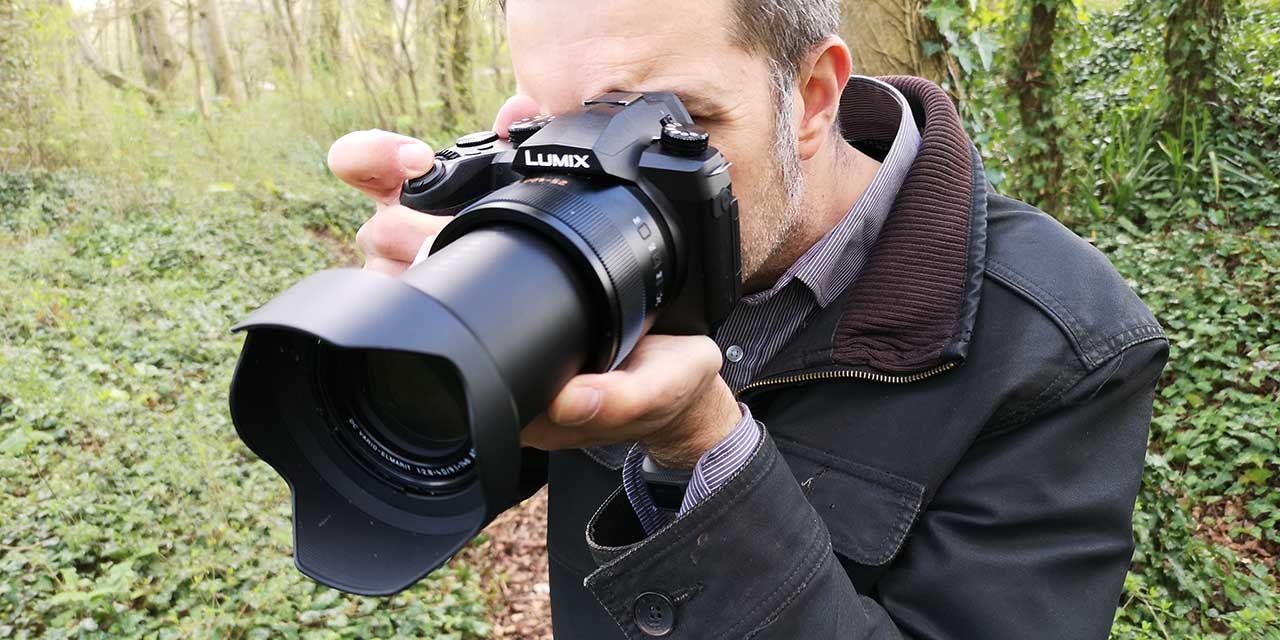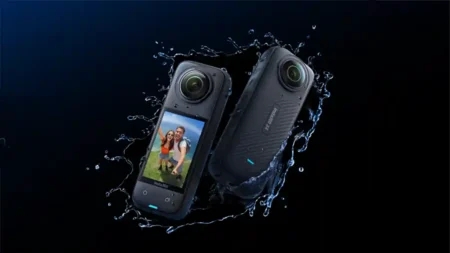What is the Panasonic FZ1000 II?
The Panasonic FZ1000 II is the company’s new premium bridge camera, which offers a 35mm equivalent focal length of 25-400mm, 4K video at 30fps and a 20.1-megapixel 1-inch sensor.
The Lumix FZ1000 II carries forward the same sensor and 16x optical zoom as its predecessor, the FZ1000. The main upgrades in this refresh are a revamped 3-inch touchscreen that’s fully articulated, an improved electronic viewfinder, more customisation, Bluetooth and, of course, 4K video and Panasonic’s 4K Photo, Post Focus and Focus Stacking modes.
Features
With the same sensor and lens, Panasonic’s FZ1000 II refresh may seem minor, but there are quite a few new useful features on board. First and foremost are Panasonic’s handy 4K Photo, Post Focus and Focus Stacking modes. We’ve seen these across several generations of Lumix cameras now, and it’s nice to see them added here. They really do offer a lot of creative potential.
4K video is now possible at frame rates of 30/25/24p, or your can shoot Full HD footage at up to 60p. The addition of a microphone port, 5-axis Hybrid OIS+ and the camera’s 3-inch, 1240K-dot fully articulated touchscreen also make the FZ1000 II a pretty formidable vlogging camera.
There’s even a new Auto Marking feature that lets you highlight your favourite still frames from your video footage.
A new Zoom Compose Assist tool is quite clever. With this enabled the FZ1000 II will track your subjects even when they leave the frame when zoomed in. What it does is swap back to a wider view of the scene so you can re-compose your subject and zoom back in.
Burst shooting sits at an impressive 12fps, and the FZ1000 II can reach a shutter speed of 1/16,000sec when using the electronic shutter. Meanwhile, there’s a new minimum aperture of f/11
New Bluetooth and WiFi enable you to share images or control the FZ1000 II remotely, and the OLED Live View Finder has been given a bump in resolution and magnification, up to 2,360K dots and 0.74x, respectively.
Panasonic has also tweaked the body design, adding new custom function buttons (bringing the total to 13) and a new metal command dial.
Panasonic’s awesome L.Monochrome D mode has been added to the FZ1000 II, as well, along with a slew of other filters.
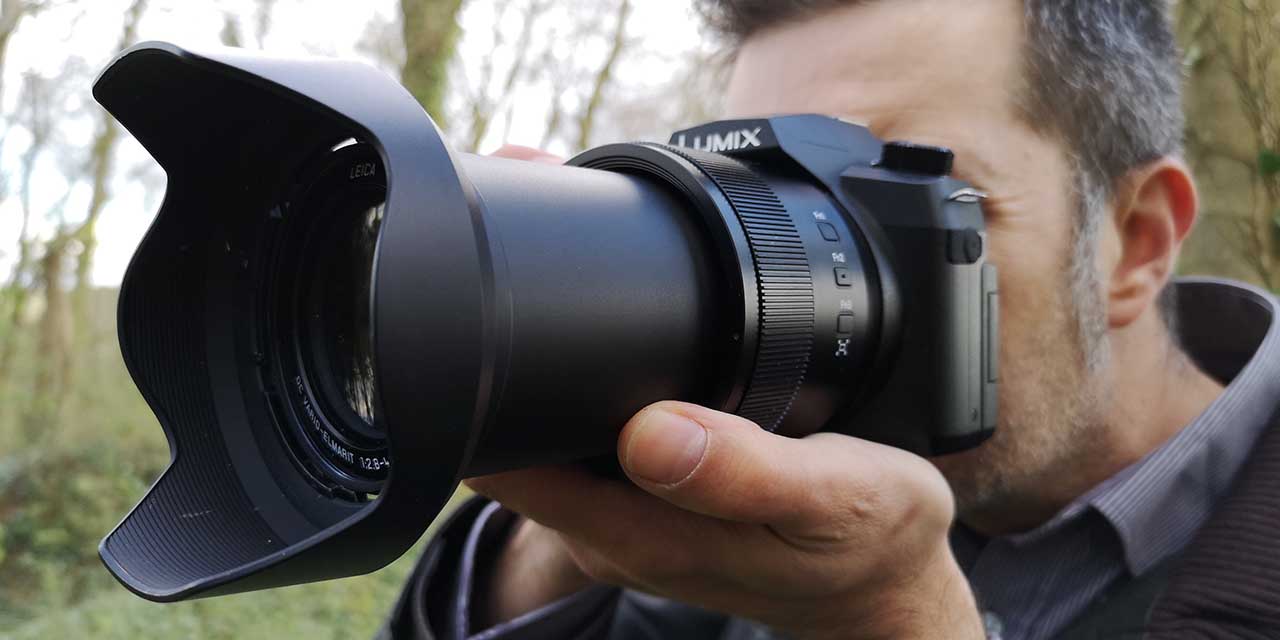
Build Quality
The Panasonic FZ1000 II is quite a bit lighter than its sibling, the FZ200, and it is very comfortable to carry. The body is made of plastic, but maintains a premium look and feel.
This is helped along by the dual mode dials and big, bright EVF that dominate the camera’s top plate.
As you’d expect from a bridge camera, the Panasonic FZ1000 II boasts a deep, rubberised hand grip on the front and a raised thumb grip on the back of the body. The camera really sets well in the hand, and I carried it for long distances this way without any issue.
This may be a small niggle, but the FZ1000 II has a nice textured, rubberised gip on the right side from that hand grip on over to the back of the camera. But it’s absent from the left side of the camera, unlike many other Panasonic cameras. You obviously hold it from the right side with the hand grip, so its absence on the left really doesn’t affect its handling. But the camera body would have a lot more premium feel if the textured rubber went all around.
In terms of customisation, there are three new Fn buttons (Fn1, Fn2, Fn3) on the left side of the FZ1000 II lens barrel. These join Fn4 and Fn5 on the top plate and Fn6 through 8 on the back of the camera. The video record button is also now on the top plate.
One of the key upgrades to the FZ1000 II is its revamped 3-inch touchscreen LCD, and the screen is very nice. It’s big, it’s bright, it’s very responsive to your touch. Even in bright sunlight I was able to see my subjects clearly. I’m a big fan of the GH5’s articulating touchscreen, as it’s so handy for filming videos for our YouTube channel. The FZ1000 II’s LCD offers the same quality and flexibility. It’s really a joy to use.
Likewise, the EVF – or Live Viewfinder in Panasonic parlance – oozes quality. The bump from 0.7x magnification to 0.74x may not seem like much, but scenes are big and bright within the LVF on the FZ1000 II.

Performance
Power on the Lumix FZ1000 II and you’re ready to go in a couple seconds. Having shot with many Panasonic cameras over the years, from the original TZ cameras on up to the GH5, the FZ1000 II brings the same accuracy in colour and tone that I’ve come to expect over the years. Auto White Balance does a fantastic job of getting colours right.
Images from the camera have a nice punch to them, and the camera does well in a range of light conditions. I was also impressed at the level of detail the FZ1000 II could pick up.
Raw files also offer plenty of detail; however, I found that shooting in JPEG + Raw the JPEG files alone had wonderful colours and detail. So for quick and easy everyday shooting, the FZ1000 II has you covered.
The lens is superbly versatile. It’s a little soft at the telephoto end of the zoom, but not terribly so. I found I could get really nice background blur when I wanted to, as well as rich wider angle shots at smaller apertures with a wide depth of field.
For me, in particular, I like the FZ1000 II’s capability as a vlogging camera. We record a lot of pieces to camera for our YouTube videos, and the Panasonic FZ1000 II has a lot of features that make this easy.
For starters, the FZ1000 II’s 4K video, and even Full HD, is crisp, clear, vibrant, full of detail and looks great on any screen. Honestly, looking at footage I’ve shot with the GH5, it’s hard to tell the difference.
The FZ1000 II’s revamped, fully articulated LCD touchscreen is also a vlogger’s dream and lets you frame yourself and check focus while delivering your piece to camera.
Beyond that, the addition of a mic socket on the side of the camera means I can mount my small Rode mic to ensure clear audio. But even the camera’s on-board mics do a fabulous job if you’re in the right environment (ie inside). I would have liked to have seen a headphone socket, though, in order to test audio before recording.
For those who want even more control over the video-making process, you can also use colour profiles.
I also found the FZ1000 II’s 5-Axis Hybrid Optical Image Stabilisation very effective. Shooting zoomed in, the subject is remarkably steady in the frame. However, this gets less stable as you move toward the telephoto end of the focal range.
Panasonic FZ1000 II Sample Images
Below are some sample photos shot with the Panasonic FZ1000 II.
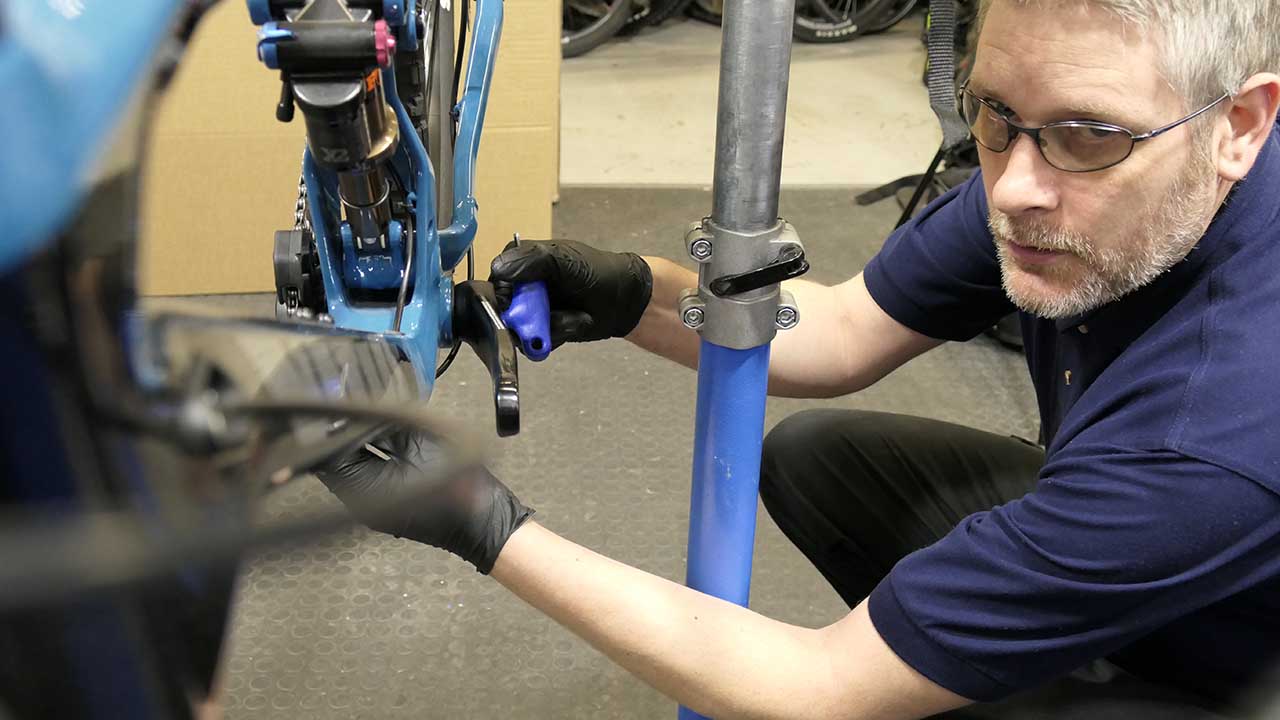
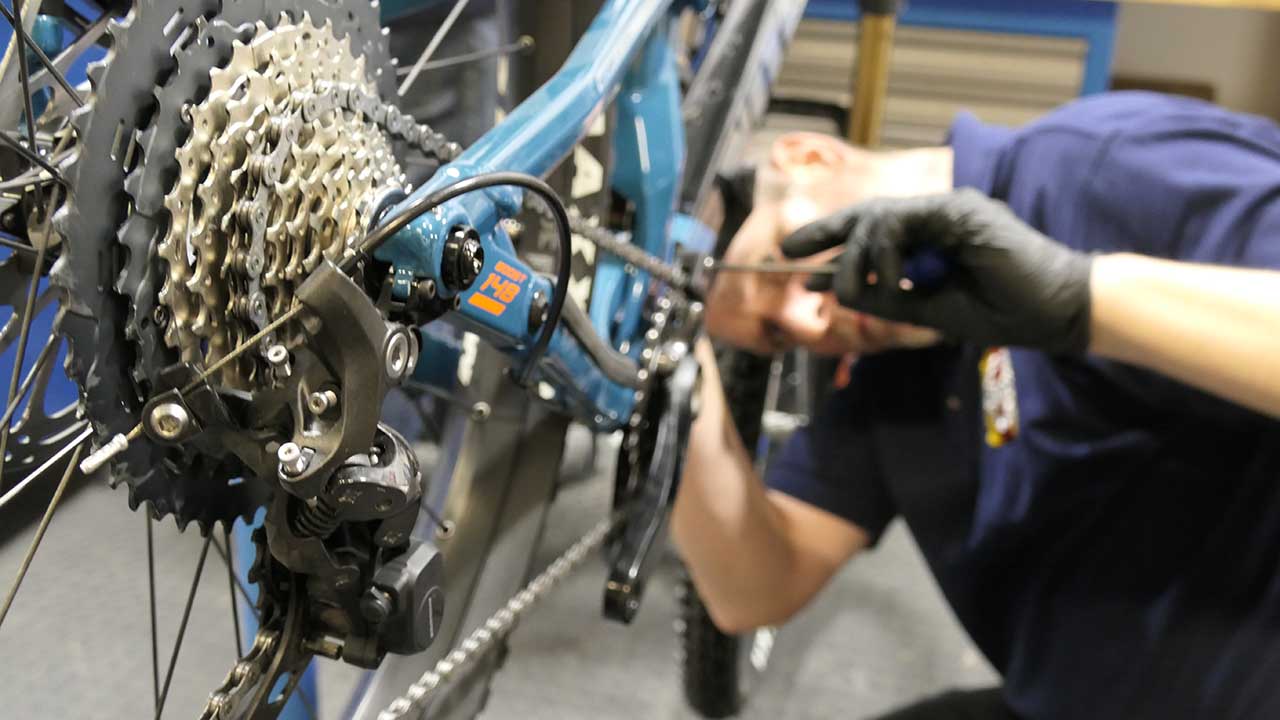

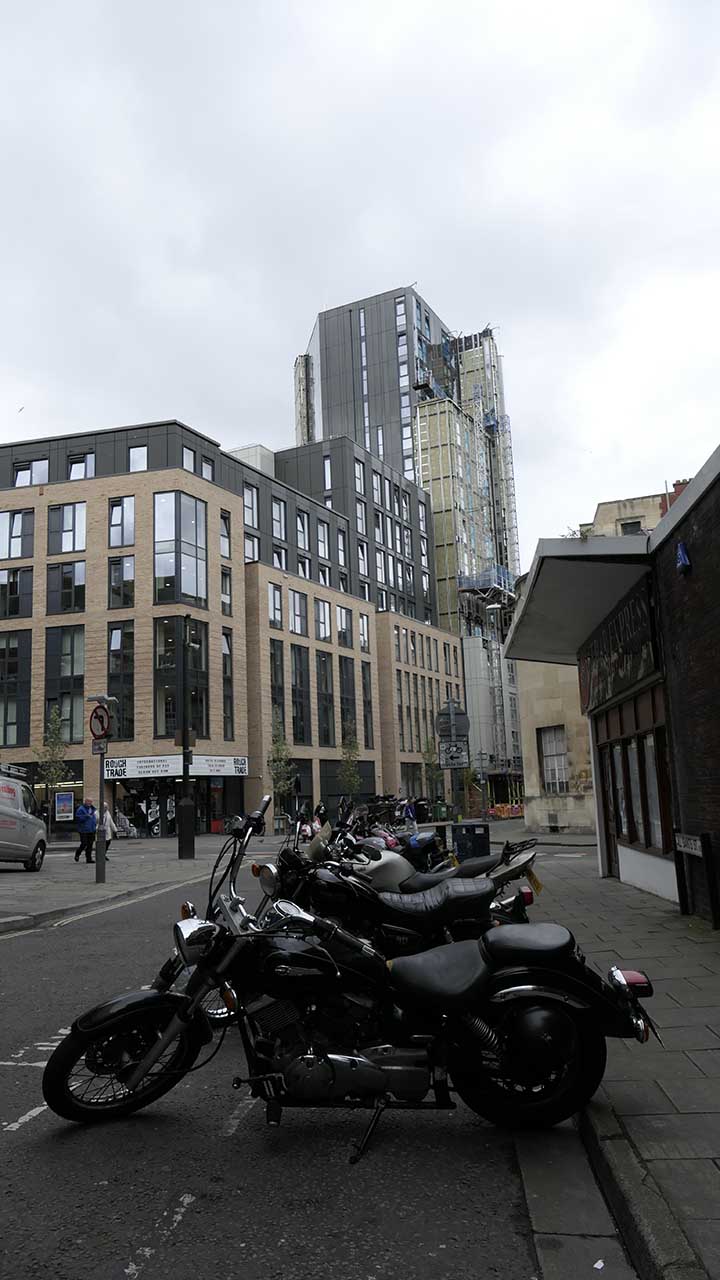

Wide-angle end of the zoom

Telephoto end of the zoom




Verdict – should I buy the Panasonic FZ1000 II?
I found this a really tough question. There’s a lot to like about the FZ1000 II. It has a large 1-inch sensor, great options for video and nice image quality. And its £769 price tag is cheaper than a lot of the competition.
But in my mind, the comparable camera that beats it is its own sibling, the Panasonic FZ2000. Price less than £100 more at £850, the Panasonic FZ2000 offer a bigger 20x zoom, near identical specifications and handy built-in ND filters.
The FZ1000 II offers a bit more customisation, but I found myself unsure what to do with all of them. The FZ1000 II is a superb camera and does all of its jobs well, but for little bit of extra cash I think I would probably buy the FZ2000 and get that bigger zoom range.
